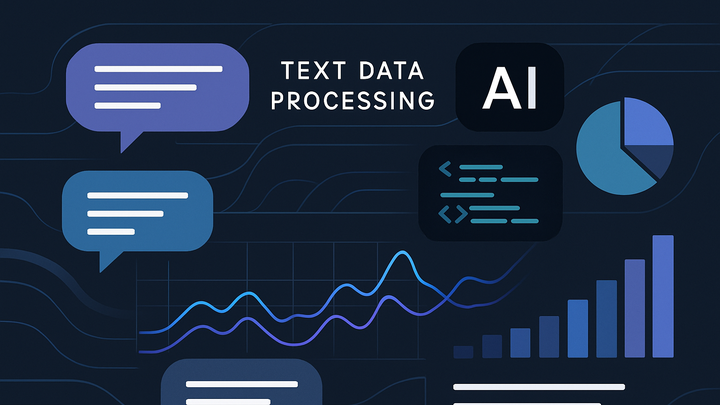Published on 2025-06-22T03:58:56Z
What is Natural Language Processing (NLP)? Examples and Use Cases in Analytics
Natural Language Processing (NLP) is a branch of artificial intelligence that enables computers to understand, interpret, and generate human language. In the analytics industry, NLP transforms unstructured text—such as user reviews, support tickets, chat logs, and search queries—into structured data and actionable insights. By applying techniques like tokenization, sentiment analysis, and entity extraction, analytics teams can uncover customer sentiment, identify emerging topics, and segment audiences based on language patterns. Platforms like Google Analytics 4 (GA4) can feed textual event data into BigQuery for downstream NLP processing, while privacy-focused tools such as PlainSignal allow you to capture text-based events and integrate custom NLP pipelines without relying on cookies. As organizations seek deeper understanding of customer behavior, NLP has become a critical component of modern analytics stacks.
Natural language processing (nlp)
NLP applies AI to analyze and derive insights from human language in analytics workflows.
1. Understanding Natural Language Processing
This section covers the core concepts and components of NLP, providing the foundation for its application in analytics.
-
Definition of nlp
NLP is the intersection of linguistics, artificial intelligence, and computer science. It focuses on enabling machines to read, understand, and generate human language.
-
Key components of nlp
NLP workflows typically involve several stages, each transforming raw text into structured insights.
-
Tokenization
Breaking text into words, phrases, or symbols (tokens) for easier analysis.
-
Parsing
Analyzing grammatical structure to understand relationships between tokens.
-
Semantic analysis
Interpreting the meaning of words and sentences in context.
-
2. Why NLP Matters in Analytics
Explore the benefits and impact of integrating NLP into analytics pipelines for richer insights.
-
Unlocking unstructured data
NLP converts free-form text—social media comments, surveys, chats—into quantitative metrics like sentiment scores and topic frequencies.
-
Enhancing customer insights
By analyzing tone, intent, and entities, organizations can tailor marketing campaigns, improve product features, and refine support processes.
-
Automating text analysis
Automated tagging, summarization, and classification save time and reduce manual effort for large volumes of text.
3. Implementing NLP in Analytics Workflows
A step-by-step guide to building an NLP-powered analytics pipeline, from data capture to visualization.
-
Data collection
Capture user-generated text via event tracking in analytics tools. Ensure privacy compliance and data quality.
-
Data preprocessing
Clean, normalize, and tokenize text. Remove stop words and handle punctuation to prepare data for modeling.
-
Model selection
Choose between pre-trained models (e.g., BERT, GPT) or custom classifiers for tasks like sentiment analysis or entity recognition.
-
Integration & reporting
Feed NLP outputs—labels, scores, extracted entities—back into your analytics dashboard for segmentation, filtering, and visualization.
4. Examples with GA4 and PlainSignal
Concrete examples showing how to integrate NLP with popular analytics SaaS products.
-
Using GA4 with bigquery and nlp
Export GA4 event data (including custom text events) to BigQuery. Run SQL queries or Python notebooks to apply NLP libraries (e.g., spaCy, NLTK) and visualize results in Looker Studio.
-
Integrating nlp with PlainSignal
PlainSignal’s cookie-free event tracking can capture user comments or search inputs. Below is an example tracking snippet; you can route collected text to an NLP service before storing aggregated sentiment or topics in PlainSignal dashboards:
-
PlainSignal tracking code
<link rel="preconnect" href="//eu.plainsignal.com/" crossorigin /> <script defer data-do="yourwebsitedomain.com" data-id="0GQV1xmtzQQ" data-api="//eu.plainsignal.com" src="//cdn.plainsignal.com/plainsignal-min.js"></script>
-
5. Best Practices and Considerations
Key guidelines to ensure effective, ethical, and scalable NLP deployments in analytics.
-
Data privacy and compliance
Anonymize or pseudonymize PII in text. Adhere to GDPR, CCPA, and other regional regulations.
-
Model performance monitoring
Continuously evaluate accuracy, drift, and bias in NLP models. Retrain with fresh data as language evolves.
-
Scalability
Leverage cloud services or serverless functions for burst-scale NLP processing, ensuring low latency for real-time analytics.
